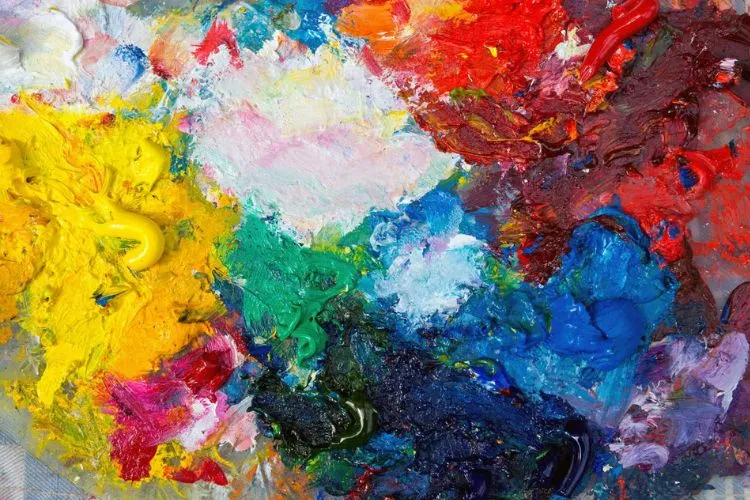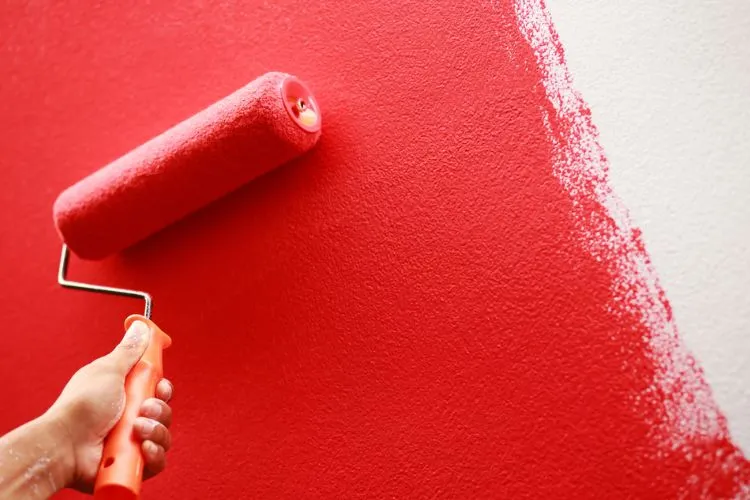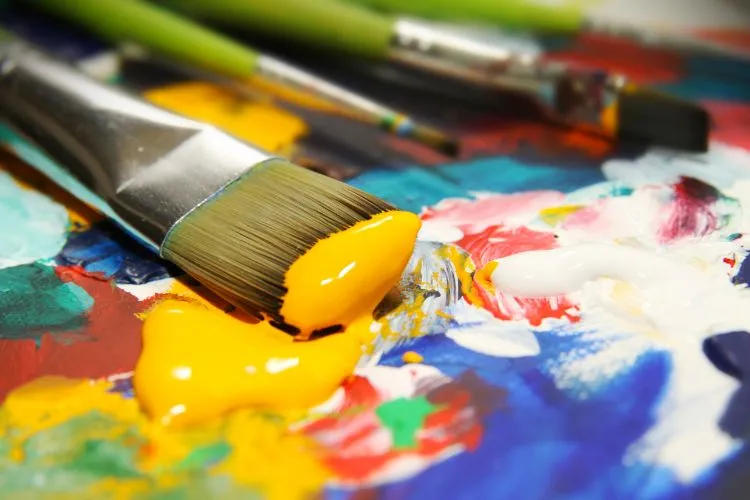Acrylic paint is a favorite among artists for its versatility and fast-drying properties. However, sometimes, it may not dry as quickly as expected, leading to frustration and delays in the creative process.
This comprehensive guide explores the reasons behind why is my acrylic paint not drying.

Why Is My Acrylic Paint Not Drying?
Environmental Conditions
The environment plays a significant role in the drying time of acrylic paints. High humidity in the air retains moisture, slowing down the drying process. This is especially true in tropical climates or during rainy seasons.
Conversely, acrylic paint dries faster in dry air. Temperature is another critical factor. Cold conditions can significantly slow down the drying process, while warmer temperatures tend to speed it up.
Moreover, spaces with poor ventilation restrict air flow around the painting, further delaying drying. Providing a well-ventilated area with controlled humidity and temperature can address these environmental issues.
Paint Characteristics
The paint’s thickness directly impacts drying time. Thicker layers take longer to dry, while thinner applications dry quicker. The type of acrylic paint also matters. Heavy body acrylics, designed for their rich texture, dry more slowly compared to fluid acrylics or inks, which have a thinner consistency.
Additionally, the use of mediums and additives can alter the drying times. Some mediums are formulated to extend the working time of acrylics, ideal for blending techniques, but they also mean longer drying periods.
Surface Characteristics
The surface or substrate used for painting affects drying times as well. Porous surfaces like canvas or wood absorb the moisture from the paint, allowing it to dry quicker.
Non-porous surfaces such as glass or plastic keep the moisture in the paint longer, resulting in slow drying. The preparation of the surface also matters. Applying a layer of gesso to canvas can aid in a more even and quicker drying process.
Brand Quality
Not all acrylic paints are created equal. High-quality paints might contain different formulations that influence drying times. Budget paints often have fillers that can extend drying times.
Additionally, some brands offer paints specifically designed to have a longer working time, appealing to artists who employ techniques that require manipulating the paint over longer periods.
Troubleshooting Slow Drying Acrylic Paint

Adjusting Painting Techniques
One of the simplest solutions is to adjust how paint is applied. Using thinner layers of paint not only speeds up drying times but also offers more control over the painting process.
For projects requiring quicker completion, selecting paints with a reputation for fast drying could be beneficial.
Modifying the Environment
Artists can take active steps to create an optimal drying environment. Using a dehumidifier can reduce air moisture, especially in humid conditions.
Increasing the room temperature gently with a space heater can also aid in speeding up the drying process, as long as it is done safely. Improving airflow with fans or working in areas with good natural ventilation will also help.
Utilizing Accelerants and Drying Aids
Several commercially available products are designed to speed up the drying time of acrylic paints. Additionally, some artists use homemade solutions, though these should be approached with caution to avoid impacting the paint’s color or texture.
It is important to consider the trade-offs when using drying accelerants, as they might affect the painting’s finishing properties.
You may also read: How to Make Acrylic Paint Dry Faster? Techniques and Tips
Pro Tips for Work Efficiency with Acrylics
Planning painting sessions according to the forecast can help avoid humid or cold days that might extend drying times. Selecting the right paints and tools beforehand can streamline the process, making it easier to achieve desired results quickly.
Proper storage of paints is also crucial. Keeping them in a controlled environment ensures they remain in good condition, ready for use without unexpected drying issues.
Case Studies: Real-world Solutions to Drying Challenges

In the “Case Studies: Real-world Solutions to Drying Challenges” section, we dive into narratives from artists who’ve creatively overcome drying time obstacles.
One artist in a humid region utilized a combination of dehumidifiers and strategically placed fans to effectively reduce the drying time of her intricate landscapes.
Another, working in a cold studio, ingeniously adapted by incorporating a warm airflow system around his working area, significantly speeding up the drying process without compromising the paint’s quality. These stories not only provide practical solutions but also inspire resilience and adaptability in artistic practice.
Frequently Asked Questions (FAQs)
Why is my acrylic paint taking longer to dry in winter?
Winter conditions often mean lower temperatures and potentially higher humidity, both of which can slow down the drying time of acrylic paints. Using a space heater and a dehumidifier can help create a more favorable drying environment.
Can I use a hairdryer to speed up the drying process of acrylic paint?
Yes, but with caution. A hairdryer set to a low heat can help speed up the drying process. It’s essential to keep the dryer at a distance to avoid overheating, which can damage the paint or substrate.
How does the thickness of acrylic paint affect its drying time?
Thicker applications of paint take longer to dry due to the increased amount of moisture contained within. Using thinner layers not only helps the paint dry faster but also provides better control over the artistic process.
Is there a difference in drying times between branded and non-branded acrylic paints?
Yes, the formulation of acrylic paints can vary significantly between brands. Higher quality or specialized paints may have different drying times compared to budget or generic brands.
What are some safety tips for using accelerants to dry paint?
Always follow the manufacturer’s instructions when using commercial accelerants. When experimenting with homemade drying aids, do so with caution to prevent unwanted reactions that could affect the paint’s durability or color. Testing on a small scale or inconspicuous area can help identify potential issues.
Conclusion:
Understanding the various factors that affect the drying times of acrylic paints is essential for tackling projects efficiently. While environmental conditions, paint characteristics, and the painting surface all play a part, practical solutions exist to mitigate their impact.
By adjusting painting techniques, modifying the surrounding environment, and using accelerants wisely, artists can overcome challenges related to slow drying times.

Meet Isabella Anderson, your acrylic painting mentor with over a decade of brush-wielding mastery. Dive into the colorful world of acrylics with her expert guidance, featured exclusively on ‘Acrylic Authority.’ Unleash your inner artist and explore the limitless possibilities of this versatile medium alongside a true acrylic aficionado.
